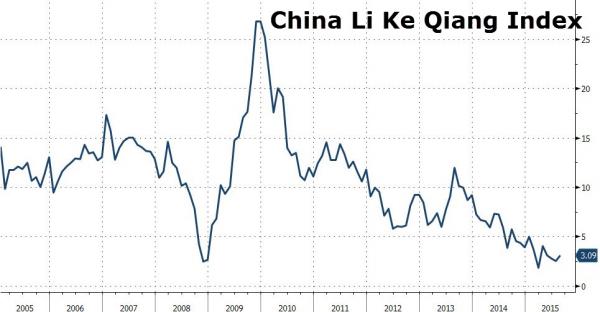Yesterday in “The Truth Behind China’s GDP Mirage: Economic Growth Slows To 1999 Levels”, we pointed out that Beijing may be habitually understating inflation for domestic output, which has the effect of making “real” GDP less “real” than nominal GDP.
This is what we’ve called the “deficient deflator math” problem and it raises questions about whether China is netting out import prices when they calculate the deflator. If they’re not, then the NBS is likely overstating GDP during periods of rapidly declining commodities prices.
If Beijing is indeed understating the deflator it’s not entirely clear that it’s their fault, as robust statistical systems take time to implement, especially across an economy the size of China’s. That said, there are plenty of commentators who believe that the practice of overstating GDP is policy and exists with or without an understated deflator. Put simply: quite a few people think China is simply lying about its economic output.
To be sure, there’s ample evidence to suggest that Beijing’s critics are right.
After all, the Li Keqiang index doesn’t appear to be consistent with the numbers coming out of the NBS and the degree to which the data tracks the Communist party’s “target” is rather suspicious (and that’s putting it nicely).

In effect, everyone is perpetually in an awkward scenario when it comes to Chinese GDP data. Economists are forced to “predict” a number that they know is gamed and while that’s pretty much always the case across economies (just see “double adjusted” US GDP data for evidence), with China it’s arguably more blatant than it is anywhere else, and one could run up a pretty impressive track record simply by betting with Beijing’s “target.” For China, the NBS is tasked with consistently reporting data that may bear no resemblance what so ever to the truth.












Leave A Comment